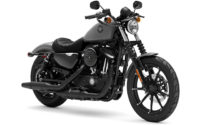Fascinating Mystery of the Traub Motorcycle
If you are a motorcycle enthusiast and also love mystery, the story behind the Traub motorcycle will be a fascinating one. The Traub motorcycle is considered the world’s rarest in the history of motorcycles. It is estimated to have been in existence since 1916.
The mystery begins in a space behind a wall, dusty and forgotten. It was noticed by a plumber who had been called to repair a house in a Chicago suburb, in 1967. In an effort to fix the issue he was called to, he ended up in the basement and had to take down part of its wall at the front of the house. This is when he found the mysterious motorcycle in the untouched place, where it had been walled up and abandoned since 1916.
Also Read: Counting on Nada and Kelley Blue book to Know Your Motorcycle Value and Price
There are many classic motorcycles in the world today, but what makes the Traub model so special is that it is the only existing one of its kind. The brilliant engineering applied in the making of this bike also gives it credit. Its construction was surely ahead of its time.
You might probably be asking who the creator of this mechanical marvel was. Well, no one knows for sure. But, let’s trace back for more information.
The Discovery
As mentioned above, the Traub motorcycle was discovered in 1967. After its discovery, the previous owners of the home where it was found were tracked down. When found, the former owners of the home said that their son had stolen the bike in 1916, presumably from the original owner and creator. When the father learned about his son’s crime, he wanted the bike returned and the son to enlist in the U.S Army. It is told that the son hid the bike under the porch behind the wall, with the intention of retrieving it after the First World War. Unfortunately, the young man lost his life in Europe, leaving the bike abandoned.
That was how the bike remained hidden and untouched for nearly 50 years. Even though we have a clue of why the bike ended up hidden in the wall, it is still untold how such a bike with extraordinary features of its time remained unknown to the motorcycle industry of that time.

Who was Traub?
The Traub motorcycle was still in good condition by the time it was found in 1967. In fact, it still works even today. After staying abandoned for that long, the tires only needed to be aired up and have some wiping. The engine still looked virtually new and the paint had no spot of rust.
The Traub motorcycle is surely a masterpiece, but whose? The identity of the Traub motorcycle has been troubling historians for quite some time. The name of the creator has likely been found; Gottlieb Richard Traub. However, it is impossible to tell whether it is a definitive answer. This is where the story becomes more interesting, unfolding the identity of the man behind the rare bike.
Gottlieb Richard Traub who was of German descent was born in America. A correspondence from Traub to the editor of Motorcycle Illustrated provides the specifications of his 4-horsepower motorcycle. The author (Traub) listed his address at North Paulina Street, Chicago. The specs he lists in the letter match the bike by the same name that was found in the wall in 1967. Further historical research could then connect Richard Traub with the creations of motorcycles.
The 1910 census shows that the then 27-year-old Richard Traub used to live at 1520 North Paulina St., Chicago. He was working as a toolmaker at a factory. He then stated that he was a self-employed experimental machinist, on his World War I draft registration card. North Paulina Street, where he lived, is not far from where the motorcycle was found walled up.
The Traub motorcycle’s technology was no doubt ahead of the other motorcycles made at the same time. The unique twin-brake/single-cam system featured in the Traub bike has not been seen on another American motorcycle until today.
The 1916 bike had an 80 cubic-inch valve, V-twin engine that yielded a capacity of 1,278CC. This is a very high CC compared to the CC of other bikes of the same time. For instance, the Indian Scout that was made three years later (in 1919), had CC ranging from 500 to 745. The Harley-Davidson model, also built in 1919 had a CC of 584.
The engine also has a few gaskets and a chain-driven front-mount magneto for a rare setup. The 3-speed transmission used by the creator was unlike any other known at the time. Next to the gas tank, there is a hand lever. Dale Walksler says, “could have been the first three-speed gearbox on an American motorcycle.”
Furthermore, the Traub motorcycle could also reach 85 mph (136 Km/h), a speed greater than that of contemporary bikes. The design of this bike altogether meant more power, greater efficiency, and performance better than any bike of that era. This coupled with the fact that the bike was all built by hand, makes it awesome.
Planning to Buy a used motorcycle? Read Kelley Blue Book Value For Used Motorcycle – Buying or Selling
Where is the Traub motorcycle now?
Just after the Traub motorcycle was discovered, a Chicago motorcycle dealer, named Torello Tacchi, traded a Suzuki worth $700 for the bike. He then restored it to its perfect condition. Later, after about ten years, Bud Ekins who was the stuntman for an ultra-cool movie star, Steve McQueen, was filming for the “Blues Brothers” movie, in Chicago. He bought the Traub motorcycle to use during this period and later sold it to a Californian bike collector named Richard Morris.
The Traub motorcycle finally ended up in Dale Walksler’s collection in the Wheels Through Time Museum, where it is found today. The museum is in North Carolina, so if you want to see it in person, that is the place to visit. But, before it got there, the Traub motorcycle had changed hands one last time. As mentioned above, the 1916 bike still runs perfectly today. The current owner, Dale Walksler even takes it out occasionally on joy rides.
If Gottlieb Richard Traub was the true creator of the rare bike, it is evident that he put in a lot of effort and time. Some questions also remain unanswered, such as if the bike was stolen, and if yes, why was it not reported? There are no records to show that Traub tried to retrieve his stolen bike. Sadly, Richard Traub died in 1952, leaving the mystery behind.
Maybe if Traub was found on time, the story would have a different twist. That is all we have about the story of the rarest motorcycle in history.


